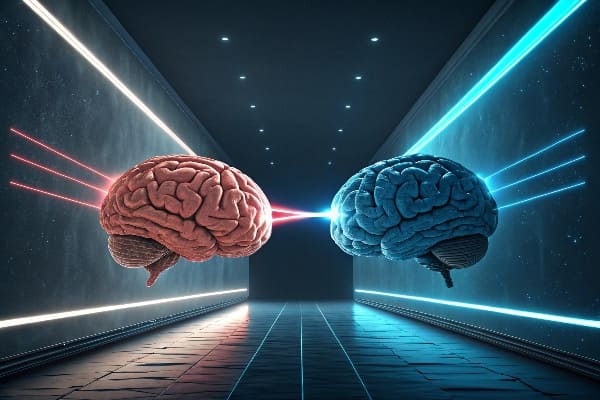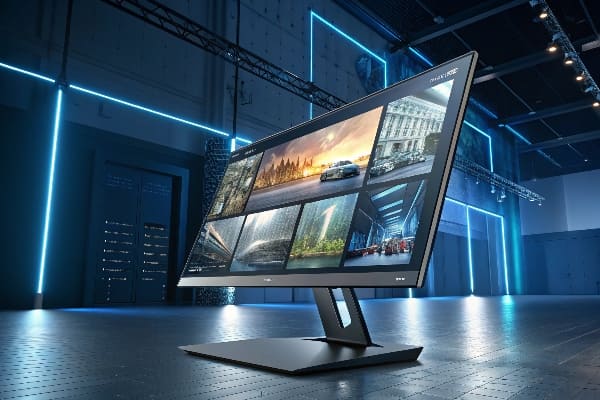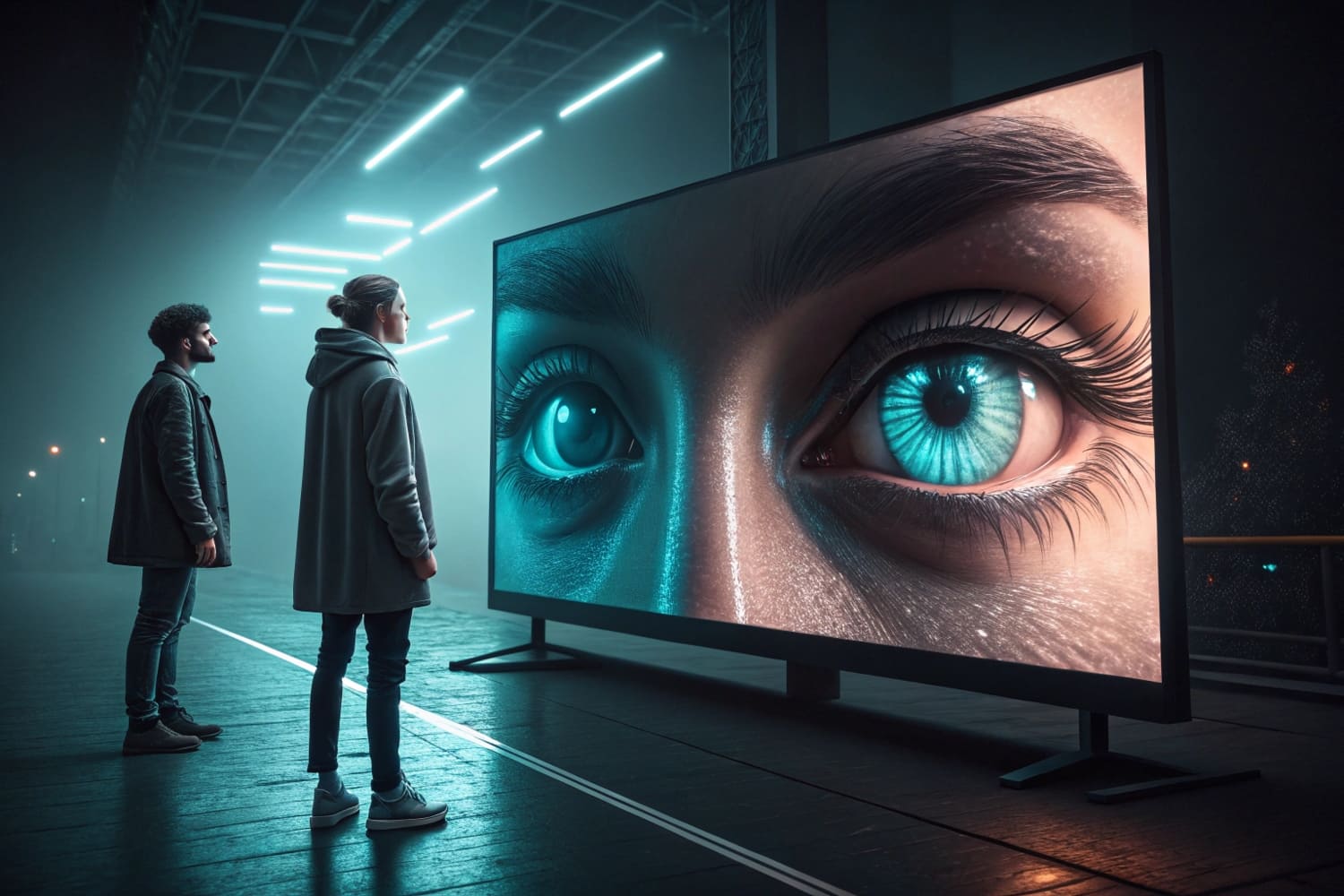Flat screens feel flat. Viewers lean closer, trying to grab depth that is not there. I face the same frustration when I pitch new cardboard display ideas.
You build 3D on an ordinary display by driving each eye a different view, blending extra depth cues such as parallax, shading, and motion so the brain stitches both pictures into believable space.

A trick alone will not hold attention. Stay with me and I will break down every cue, tool, and shortcut I use so your next product demo stands out without extra hardware.
What makes a screen 3D?
Your customer stares at a flat panel that shows bright colors yet never pops. They feel the gap between promise and reality. I wrestled with that gap on the production floor last quarter.
A screen feels 3D only when it feeds both eyes different perspectives while reinforcing depth cues like motion parallax, stereoscopic offset, shading, and relative size.

Key Depth Cues
I start with human vision. Each eye sits about 65 mm apart, giving a natural angle. Software can fake that by rendering two frames, one for the left eye, one for the right. When those frames hit the same panel in quick succession using active shutter glasses or a parallax barrier, the brain locks them together. Yet stereoscopy1 is only one part. Even with one eye closed we still notice depth thanks to motion parallax2, where nearer objects slide faster across the retina. Shading, occlusion, and size scaling add more hints.
| Cue | Cost Impact | Setup Speed |
|---|---|---|
| Stereo pair | Medium | Moderate |
| Motion parallax | Low | Fast |
| Shading & light | Low | Fast |
| Size scaling | None | Instant |
Building the Illusion Step by Step
First, I export two camera views from my 3D software, offset by the average inter-ocular distance. Second, I embed metadata that tells compatible players when to flip frames for each eye. During live demos I add a slow orbiting camera to gift subtle parallax; clients instantly lean in. On our cardboard display renders I exaggerate rim light so edges pop, mimicking real shadows. If the budget forbids special glasses, I turn to narrow-band lenticular overlays3. They cost cents per unit once we move to mass print, and they glue straight onto the screen face. The overlay sends each eye its own pixel column. It is not perfect—fine text can blur—but shoppers in a store freeze when a crossbow floats forward. That pause equals higher sell-through, which is why I keep refining this low-tech trick.
Is there a 3D monitor?
I remember the first “3D monitor” sample that landed on my desk. It dazzled in the dark office, yet bulk orders stalled because buyers feared high pricing.
Yes, dedicated 3D monitors exist; they integrate parallax barriers, lenticular lenses, or active shutter tech to deliver separate images to each eye without the need for new computers.

Common 3D Monitor Types
All units share one goal—send eye-specific images—but they differ in method.
| Monitor Type | Viewing Gear | Pros | Cons |
|---|---|---|---|
| Active shutter LCD4 | Battery glasses | Full resolution | Glasses fatigue |
| Passive polarized5 | Cheap glasses | Light; cheap | Half vertical resolution |
| Autostereoscopic lenticular6 | None | Glass-free | Narrow sweet spot |
| Light-field panel | None | Multi-view freedom | Very high cost |
Choosing for Real Projects
When I plan a retail rollout I list target foot traffic first. For a kiosk where only one shopper stands dead center, an autostereoscopic desktop works. The narrow sweet spot becomes a positive; it guides the viewer to the prime position and locks attention. For trade shows humming with crowds, passive polarized panels win. They allow a pile of low-cost glasses that users can slip over prescription lenses. The drop in resolution is hidden by vivid booth lighting and bold product renders. I budget active shutter rigs only for executive pitches, where perfect pixel clarity matters more than convenience. I learned that trick after a CEO complained about ghosting during a Barnett Outdoors pitch. The higher refresh rate of shutter panels killed the issue, closed the deal, and covered the upgrade fee thrice over. In every case I pair the display with our cardboard standees, matching lenticular art on the stand so the motion effect flows from screen to physical box. That cohesion anchors the 3D story in the shopper’s mind and, more importantly, secures re-orders.
Can you watch 3D on any screen?
A tight launch window sometimes leaves no room for fancy panels. My team must transform an ordinary store tablet into a 3D teaser overnight.
You can simulate 3D on any screen by overlaying stereoscopic frames, using red-cyan anaglyphs, wiggle imagery, or depth-map driven parallax animations that run inside standard web browsers.

Software-Only Tricks
The oldest hack is anaglyph. Render left view tinted cyan and right view tinted red, then combine. Viewers need cheap paper glasses with matching filters. It is not subtle, but the color shift works for dramatic hero images. GIF wiggle is easier still: alternate left and right frames at 2–4 Hz. The brain converts the oscillation into perceived depth. I hide the wobble by locking the background layer and only nudging the foreground, so nervous shoppers do not get dizzy.
| Method | Extra Gear | Color Fidelity | Best Use |
|---|---|---|---|
| Red-cyan anaglyph7 | Paper glasses | Poor | Print ads |
| Wiggle GIF8 | None | Good | Social media |
| WebGL parallax | None | High | Product pages |
| Depth map CSS9 | None | Medium | Mobile apps |
Practical Checklist Before Launch
First, export both stereo frames at double resolution; compression will sap detail on older tablets. Second, embed alternative text in the HTML so search crawlers still read the scene. Third, supply plain 2D fallbacks to avoid alienating color-blind users. When we built Barnett’s holiday campaign, I timed the wiggle loop so the crossbow bowstring lined up every second tick—that kept legal happy by showing the product in a neutral state half the time. Lastly, test brightness in the real store. A top-lit aisle can wash out delicate shading, so I boost contrast by ten percent during late compositing. These micro steps cost minutes yet decide whether casual hunters stop, tap, and end up ordering. Experience taught me: spend small effort on preparation, save big on support calls later.
Conclusion
Depth is a brain trick. Pick the cue, match it to your budget, and even a humble store tablet can turn flat pixels into a story that sells.
Learning about stereoscopy can deepen your understanding of 3D visualization and its applications in various fields. ↩
Understanding motion parallax can enhance your knowledge of depth perception and improve your visual design skills. ↩
Exploring lenticular overlays can provide insights into innovative display techniques that enhance visual experiences. ↩
Explore this link to understand the full benefits and drawbacks of Active shutter LCD monitors, crucial for making informed decisions. ↩
Discover how Passive polarized technology operates and its implications for 3D viewing experiences, essential for retail applications. ↩
Learn about the advantages of Autostereoscopic lenticular displays, especially for retail setups, to enhance customer engagement. ↩
Discover the mechanics behind Red-cyan anaglyphs and how they can create striking visuals in print advertising. ↩
Explore this link to understand how Wiggle GIFs enhance engagement on social media, making your content more dynamic and appealing. ↩
Learn about Depth map CSS and its potential to enhance user experience in mobile applications with depth effects. ↩

